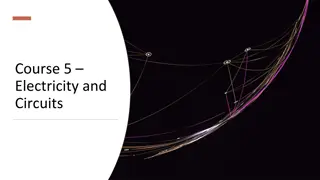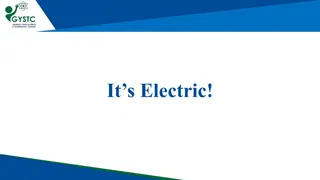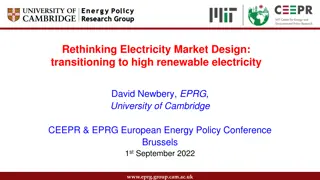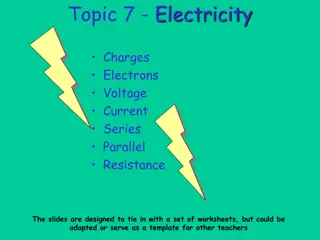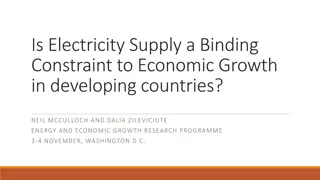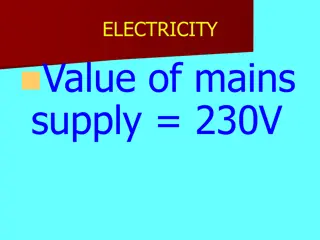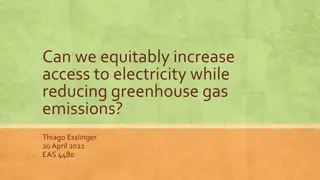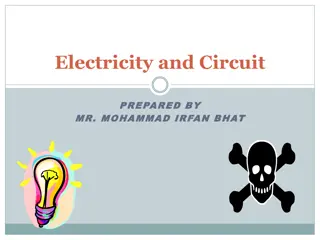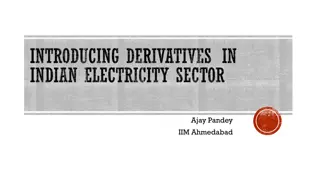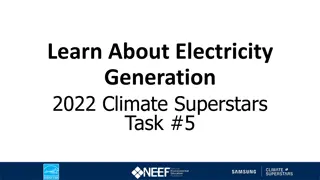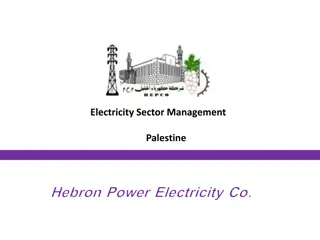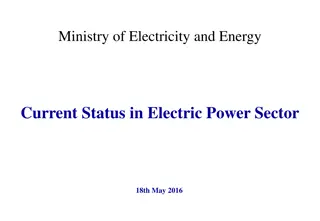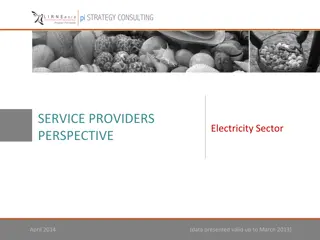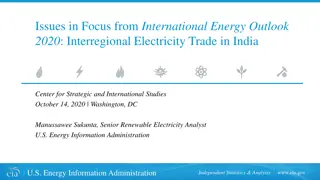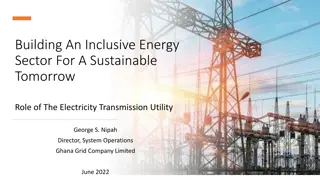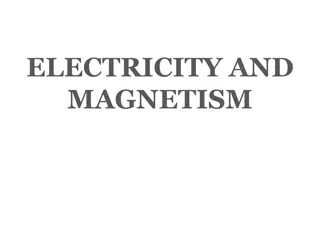Basic Concepts in Electricity
key concepts in electricity including series circuits, static electricity, voltage difference, conservation of charge, conductors, energy conversion, electric force, unit of electrical energy, charges interactions, and more.
Download Presentation

Please find below an Image/Link to download the presentation.
The content on the website is provided AS IS for your information and personal use only. It may not be sold, licensed, or shared on other websites without obtaining consent from the author.If you encounter any issues during the download, it is possible that the publisher has removed the file from their server.
You are allowed to download the files provided on this website for personal or commercial use, subject to the condition that they are used lawfully. All files are the property of their respective owners.
The content on the website is provided AS IS for your information and personal use only. It may not be sold, licensed, or shared on other websites without obtaining consent from the author.
E N D
Presentation Transcript
A_____ is a circuit with only one loop for current to follow. Series circuit
An accumulation of excess electric charge is ____. Static electricity
What is voltage difference? The electric force that makes current flow in a circuit
According to ___, electric charge cannot be created or destroyed Law of conservation of charge
Resistance in wires causes electrical energy to be converted into which form of energy? Thermal energy
What happens to the electric force if the distance between two electric charges is increased? Force becomes weaker
A commonly used unit for electrical energy is ___ Kilowatt hour kWh
Like charges ____; opposite charges _____ Repel; attract
An ___ surrounds every electric charge and exerts a force that causes other charges to be attracted or repelled. Electric field
____is a transfer of charge between two objects because of buildup of static electricity Static discharge
Connecting an object to earth with a conductor is called _____ Grounding
A device that can detect the presence of an electric charge is called an ____ Electroscope
The net movement of electric charge in a single direction is an _____ electric current
_____is the tendency for a material to oppose the flow of electrons Resistance
The rearrangement of electrons on a neutral object caused by a nearby charged object is called ___ Charging by induction
Which is stronger between a proton and an electron gravitational force or electric force? Electric force
A material in which electrons are able to move easily is a ____ conductor
A material in which electrons are not able to move easily is an ____ because the electrons are held tightly to the atoms. Insulator
An example of a large discharge of static electricity is ____ lightning
What prevents damage from lightning? Grounding
When current flows what caused the net movement of electric charges? Electric force
Electric charge flows from ____ voltage to ___ voltage. Higher; lower
A closed path that electric current follows is a(n) ____ circuit
What object have greater resistance: metals or nonmetals? nonmetals
Name three things that will cause the resistance in an object to increase. Longer wire Thinner wire Increase the temperature of the wire
If you decrease the resistance and increase the voltage difference in a circuit, what will happen to the current? The current will increase
The relationship between voltage difference, current, and resistance in a circuit is known as ____ Ohm s law
_____ circuits contains two or more branches for current to move thru. Parallel
Household circuits: series or parallel? parallel What type of voltage? 120v and 240v
What is the purpose of a fuse box or circuit breakers? Prevent overheating
A ____has a small piece of metal in it that melts if the current becomes too high breaking the circuit. fuse
A_____ contains a piece of metal that bends when the current is too high causing the switch to flip to the off position. Circuit breaker
The rate at which electrical energy is converted to another form of energy is the ____ Electric power
What is used to maintain voltage difference in a circuit? battery
What is the difference between a dry cell battery and a wet cell battery? Type of electrolyte


